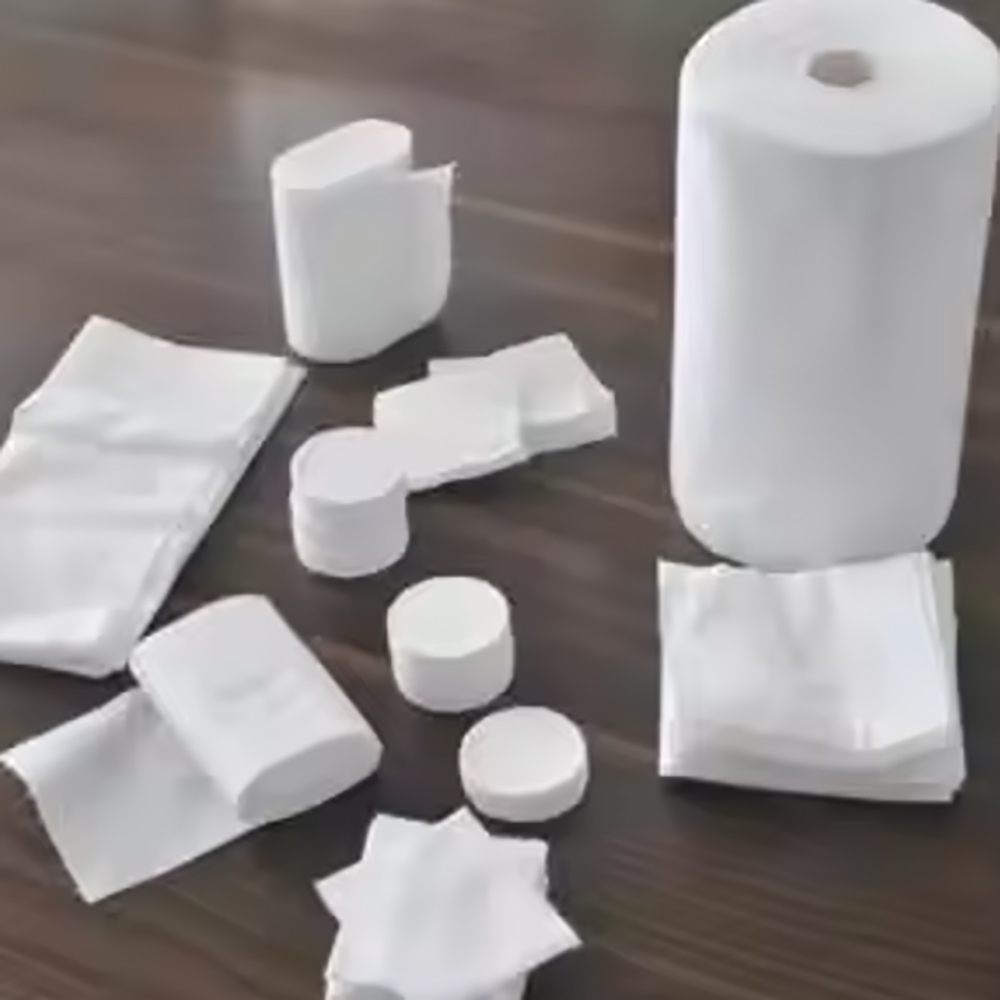
- +8613859957860
- [email protected]
- No.11 Shuangfu Road, Tong’an District, Xiamen, China
Spunlace nonwoven fabric, also known as hydroentangled fabric, is a type of nonwoven textile made without traditional weaving or knitting. Instead, high-pressure water jets entangle fibers to form a strong, cohesive fabric. This method makes spunlace fabric soft, durable, and highly absorbent—perfect for applications where strength and softness are critical.
The production of spunlace nonwoven fabric involves several key steps:
Preparation of Raw Materials
Spunlace fabric can be made from a variety of fibers, including cotton, viscose, polyester, or blends of these.
Fiber Layering
The fibers are carded into a web, creating an evenly distributed layer.
Hydroentanglement Process
High-pressure water jets are directed onto the fiber web, intertwining the fibers into a cohesive fabric.
Drying and Finishing
The fabric is dried and treated for specific properties like softness, tensile strength, or water resistance.
This process results in a fabric that is free of adhesives or binders, making it skin-friendly and ideal for hygiene applications.
Spunlace nonwoven fabric is known for its smooth texture, making it ideal for skin contact applications such as baby wipes and facial tissues.
Despite its softness, spunlace fabric is durable and resists tearing.
The material can absorb liquids effectively, making it a preferred choice for cleaning and hygiene products.
Spunlace fabric stands out from other nonwoven materials like meltblown or spunbond fabrics due to its hydroentanglement process. Here’s how they compare:
| Property | Spunlace | Meltblown | Spunbond |
|---|---|---|---|
| Softness | Very soft | Moderate | Stiff |
| Strength | High | Low | High |
| Absorbency | Excellent | Limited | Limited |
| Applications | Wipes, hygiene, cleaning | Filtration | Packaging, agriculture |
Spunlace nonwoven fabric can be made from various fibers, each offering unique properties:
Most manufacturers use blends of these fibers to create fabrics with balanced properties tailored for specific applications.
Spunlace nonwoven fabric finds applications across industries:
Spunlace fabric is hypoallergenic and free of harsh chemicals, making it safe for all skin types.
Its structure allows it to hold moisture effectively, ensuring wet wipes stay damp longer.
When made with natural fibers like cotton, spunlace wipes are biodegradable, aligning with consumer preferences for sustainable products.
Both cotton and polyester are widely used in spunlace production. While cotton provides natural softness and biodegradability, polyester offers strength and cost-effectiveness. The choice of material depends on the intended application of the fabric.
The biodegradability of spunlace fabric depends on the fibers used. Fabrics made from natural materials like cotton and viscose are biodegradable, while polyester-based fabrics are not. Manufacturers often blend fibers to balance environmental impact with performance.
When selecting a spunlace nonwoven fabric manufacturer, consider the following: